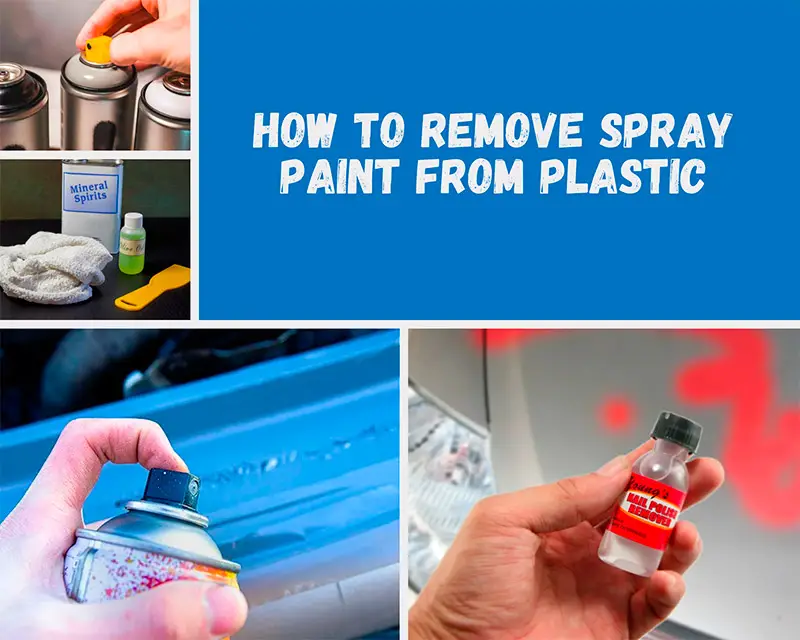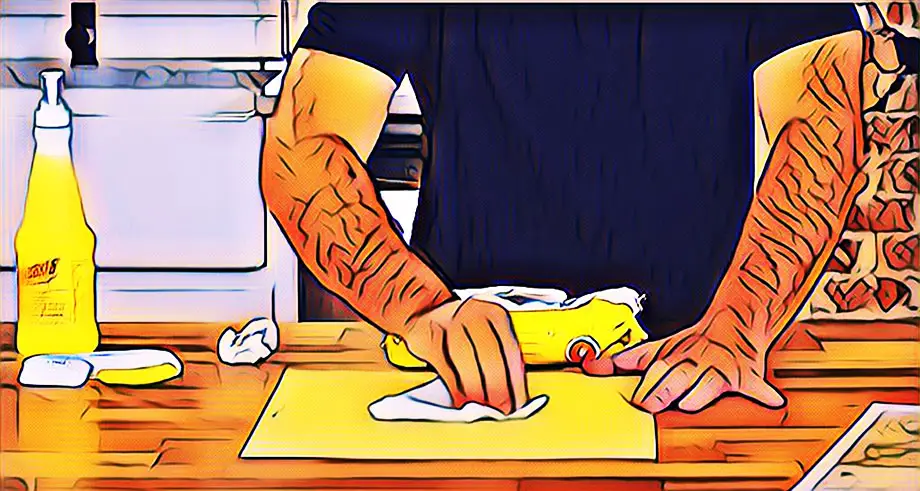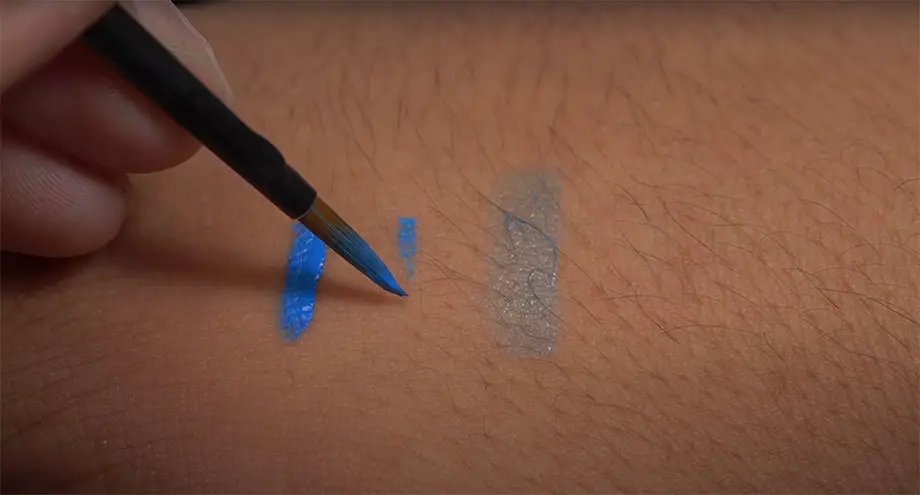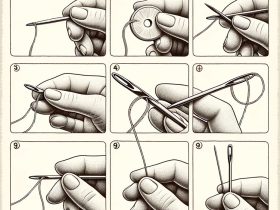The thrill of bringing life back to old items through DIY projects is undeniable. A dash of color and creativity can instantly transform a drab piece into a work of art. However, we’ve all been there, when our artistic endeavors take an unintended turn and we find ourselves wondering how to remove spray paint from plastic. Whether it’s a misdirected burst of paint on your patio chair or a child’s artistic expression on their plastic toys, removing spray paint from plastic surfaces can be a challenging task.

In this guide, we’re going to demystify the process. We’ll walk you through step-by-step instructions and provide practical tips on removing spray paint from plastic without causing any damage. By the time you finish reading, you’ll have the knowledge and confidence to tackle any unwanted paint marks, turning what could have been a disaster into a simple cleanup job.
So, if you’re keen to discover how to remove spray paint from plastic effectively and safely, then this guide is tailor-made for you. Let’s dive in and return your plastic items to their former glory.
Understanding Spray Paint on Plastic Surfaces
Before we delve into how to remove spray paint from plastic, it’s important to understand why this task can be particularly challenging. Plastic, being a non-porous and slick material, doesn’t absorb the paint as wood or drywall would. Consequently, the spray paint forms a layer on top of the plastic, adhering to the surface instead of penetrating it.
The Challenges of Removing Spray Paint from Plastic
One of the primary challenges in removing spray paint from plastic surfaces is the risk of causing damage. Plastic, especially softer types, can be easily scratched or discolored if the wrong removal methods or abrasive materials are used.
Another obstacle is that many typical paint-removing agents are too harsh for plastic. They can end up causing more harm than good by etching the surface or causing it to warp or melt.
Moreover, spray paint is designed to be durable and resistant to elements like water and UV light. Once it dries and hardens on a plastic surface, it can be quite stubborn to remove.
Finally, different types of plastic respond differently to paint removal methods. What works for one may not work for another, adding another layer of complexity to the challenge.
In the following sections, we’ll tackle these issues head-on, providing you with tested and safe methods on how to remove spray paint from plastic surfaces. By understanding the nature of spray paint on plastic, you’ll be better equipped to remove it effectively and without causing damage.
How to Remove Spray Paint from Plastic: A Step-by-Step Guide
In this section, we’ll provide you with a detailed, step-by-step guide on how to remove spray paint from plastic. This guide aims to be practical, simple to follow, and effective in addressing the challenges posed by this task.
Necessary Tools and Materials
Before you begin, you’ll need to gather the following tools and materials:
- Mild dish soap
- Warm water
- Soft cloths or sponges
- A plastic putty knife or scraper
- A gentle abrasive pad (optional)
- Paint thinner or nail polish remover (acetone-based)
Always remember to use these materials cautiously. Overuse of certain products may potentially harm the plastic.
Preparing Your Work Area
Start by preparing your work area. This step is essential to ensure the safety of your surroundings and to prevent further spreading of the spray paint:
- Choose a well-ventilated area: Paint thinner and nail polish remover can emit strong fumes. Ensure you work in a well-ventilated area or outdoors, if possible.
- Protect surfaces: Cover the area around your project with a drop cloth or old newspapers to catch any drips or spills.
- Wear protective gear: It’s a good idea to wear gloves and safety glasses to protect your skin and eyes, particularly if you’ll be using a paint thinner or nail polish remover.
Steps to Remove Spray Paint from Plastic
- Initial Cleaning: Begin by cleaning the painted area with warm soapy water. This will remove any loose dirt or grime and may even start to lift off some of the paint.
- Scraping: Use a plastic scraper or putty knife to gently remove the loosened paint. Be careful not to scratch or gouge the plastic.
- Chemical Treatment: If there’s still paint left, dampen a soft cloth with a small amount of paint thinner or acetone-based nail polish remover and gently rub the painted area. Always test this on an inconspicuous area first to make sure it won’t damage the plastic.
- Final Cleaning: Rinse the area with warm soapy water again to remove any remaining paint or chemicals. Pat dry with a clean towel.
With these steps, you now know how to remove spray paint from plastic without damaging the material. Each situation may require a slightly different approach, so don’t be discouraged if the first attempt doesn’t completely remove the paint. Persistence and patience often pay off.
Proven Methods for Removing Spray Paint from Plastic
Beyond the traditional method, there are a few more techniques that can prove effective in removing spray paint from plastic. Here, we delve into some of these proven methods and how to use them properly.
Using Vegetable Oil or Mayonnaise
Vegetable oil or mayonnaise can be great natural alternatives for removing spray paint from plastic. They are especially useful when dealing with delicate plastic items:
- Apply a generous amount of vegetable oil or mayonnaise to the painted area.
- Allow it to sit for a few hours. The oil will start to break down the paint.
- Gently scrape off the paint using a plastic scraper.
- Rinse the item under warm water and dry it with a clean towel.
Using Nail Polish Remover
Nail polish remover, particularly the acetone-based type, can be quite effective. However, be cautious as it can damage some types of plastic:
- Test the nail polish remover on a hidden area of the plastic to ensure it doesn’t damage or discolor the material.
- If safe, apply a small amount of nail polish remover to a cloth.
- Gently rub the cloth on the painted area until the paint starts to come off.
- Rinse the area with warm soapy water and dry it off.
Using Denatured Alcohol
Denatured alcohol is another effective option. It’s less likely to damage plastic but is still strong enough to remove spray paint:
- Apply denatured alcohol to a cloth.
- Rub the cloth over the painted area. Be patient as this may take a little time.
- Once the paint has been removed, wash the plastic with warm soapy water and dry it off.
Using a Paint Remover
There are commercial paint removers available that are safe to use on plastic. Be sure to read the instructions on the product before use:
- Apply the paint remover as directed by the product instructions. Usually, you’ll need to apply it to the painted area and let it sit for a certain amount of time.
- Scrape off the loosened paint with a plastic scraper.
- Rinse the plastic thoroughly with warm soapy water.
- Dry the plastic completely.
Each of these methods can be quite effective at removing spray paint from plastic. Choose the one that suits your situation best, and remember that patience is key when undertaking this task.
How to Get Spray Paint off of Plastic Without Damaging the Surface
Removing spray paint from plastic can be tricky, and care should be taken to ensure the underlying plastic isn’t damaged in the process. Here’s how you can get spray paint off plastic without causing unnecessary harm to the surface.
Tips to Avoid Damaging the Plastic
- Test First: Before applying any removal solution, always perform a spot test on an inconspicuous area of the plastic item to ensure that it won’t cause any discoloration or damage.
- Gentle Scraping: When scraping off the paint, always use a plastic scraper. Avoid using metal scrapers or abrasive scrubbing pads as they can scratch and damage the plastic surface.
- Patience: Don’t rush the process. Some methods may take time to fully penetrate and break down the paint. Trying to speed up the process by scrubbing hard can lead to scratches and damages.
- Avoid Heat: Heat can warp plastic, so avoid any methods that involve heat or hot water.
- Clean Thoroughly: After removing the paint, clean the plastic item thoroughly to remove any residual removal agent, which could potentially harm the plastic if left unchecked.
Safety Measures to Follow
- Use Gloves: Some of the substances used in paint removal, such as acetone or commercial paint removers, can be harsh on the skin. It’s advisable to use gloves while handling these substances.
- Ventilation: Ensure the workspace is well-ventilated, especially if you’re using commercial paint removers or acetone, as they can release strong fumes.
- Eye Protection: It’s advisable to wear safety glasses to prevent any splashes from getting into your eyes.
- Follow Instructions: If using a commercial product, always read and follow the instructions carefully. Some products may have specific safety measures to follow.
By adhering to these tips and safety measures, you should be able to remove spray paint from plastic without causing damage, while also keeping yourself safe during the process.
Prevention: Avoiding Unwanted Spray Paint on Plastic
Preventing unwanted spray paint on plastic is just as important as knowing how to remove it. By taking a few precautionary steps, you can save yourself the time and effort of having to remove spray paint later.
Best Practices for Protecting Plastic Surfaces when Spray Painting
- Mask Off Areas: If you’re spray painting near plastic objects, make sure to mask off any areas that you don’t want to be painted. Use painters tape and plastic sheets or newspaper to cover these areas effectively.
- Separate Workspaces: Wherever possible, keep the plastic items that you don’t want to paint away from your workspace. This minimizes the chance of stray paint droplets landing on them.
- Controlled Spray: Use controlled, even sprays to reduce the chance of paint overspray. Holding the can too far away from the object being painted can result in a wider spray radius and increase the chances of hitting unwanted areas.
- Consider the Wind: If you’re spray painting outside, always take into account the wind direction. The wind can easily carry the paint droplets to plastic surfaces you didn’t intend to paint.
- Use Spray Paint Shields: There are spray paint shields available in the market that can help direct the paint spray and prevent overspray.
By following these best practices, you can avoid unwanted spray paint on your plastic surfaces, making your painting projects cleaner and more efficient.
Conclusion
Knowing how to remove spray paint from plastic is a handy skill for anyone who enjoys DIY projects, home improvements, or even arts and crafts. In this guide, we covered a variety of methods to achieve this, from using household items like vegetable oil and mayonnaise to nail polish remover, denatured alcohol, and commercial paint removers.
However, the key to a successful removal process lies not only in the methods used but also in the care taken to avoid damaging the plastic surface. Always perform a spot test, use a gentle touch, be patient, avoid heat, and clean thoroughly after paint removal. Safety, too, is of paramount importance; protect your skin, eyes, and respiratory system, especially when using chemical substances.
Prevention is always better than cure, and following a few best practices can save you from unwanted spray paint on your plastic items. Remember to mask off areas, separate workspaces, use controlled sprays, be mindful of wind conditions, and utilize spray paint shields where necessary.
Ultimately, every spray paint mishap is a learning experience. Over time, with patience and practice, you’ll become an expert at removing spray paint from plastic, handling potential accidents efficiently, and preventing them from happening in the first place.
FAQ
What types of plastic are more prone to damage when removing spray paint?
Different types of plastics have varying levels of resistance to chemicals and mechanical stress. Generally, softer plastics like polyvinyl chloride (PVC) or polyethylene are more susceptible to damage during the paint removal process. Always test the removal method on an inconspicuous area of the plastic first to gauge its reaction.
Can I remove spray paint from plastic using household vinegar?
While vinegar is a mild acid that can sometimes be used to remove paint, its effectiveness on spray paint is inconsistent, and it may not be strong enough to remove the paint completely. It’s recommended to use one of the methods mentioned in the article, as they are proven to be more effective on spray paint.
How long does it take for spray paint to fully dry on plastic surfaces?
The drying time for spray paint can vary based on factors like the type of paint, the thickness of the coat, and environmental conditions like temperature and humidity. Typically, it can take anywhere from 20 minutes to 24 hours for a layer of spray paint to dry completely.
Does temperature or humidity affect the process of removing spray paint from plastic?
Yes, both temperature and humidity can impact the paint removal process. Higher temperatures can cause the paint to bond more strongly with the plastic, making it harder to remove. High humidity can also slow down the drying time of certain removal agents, potentially reducing their effectiveness.
Is there a professional service I can hire to remove spray paint from plastic?
Yes, there are professional services available that specialize in paint removal from various surfaces, including plastic. They use specialized equipment and techniques to remove paint without damaging the surface. However, these services can be costly, and for smaller objects or minor incidents, using one of the DIY methods mentioned in this guide could be more cost-effective.












Leave a Reply